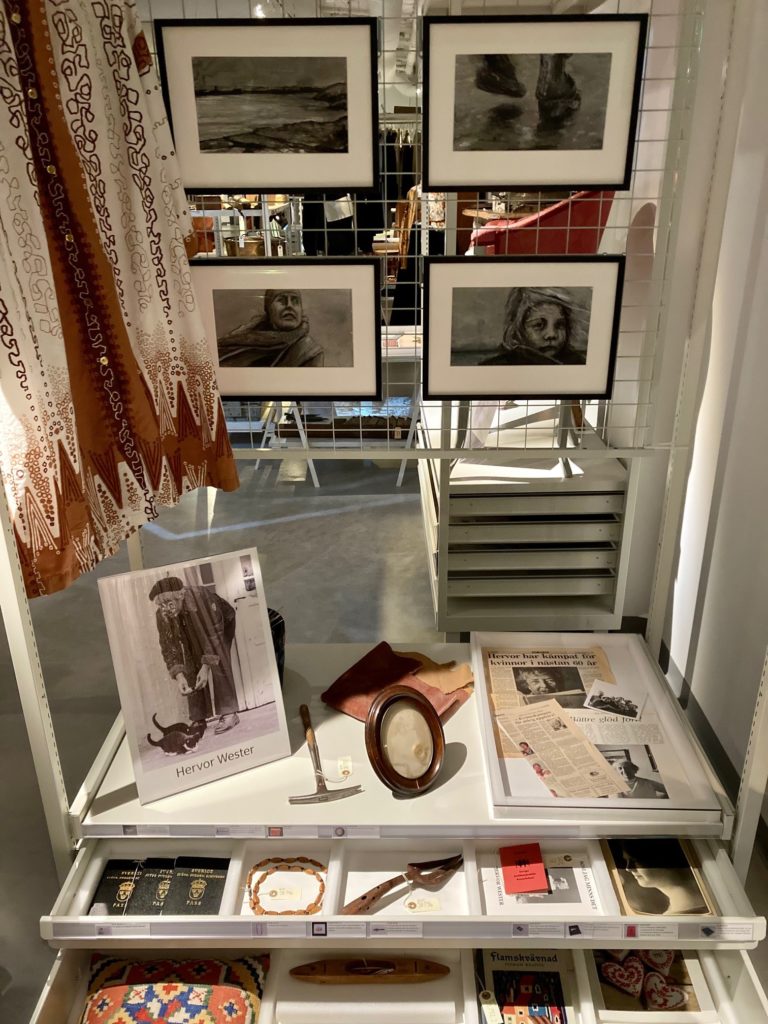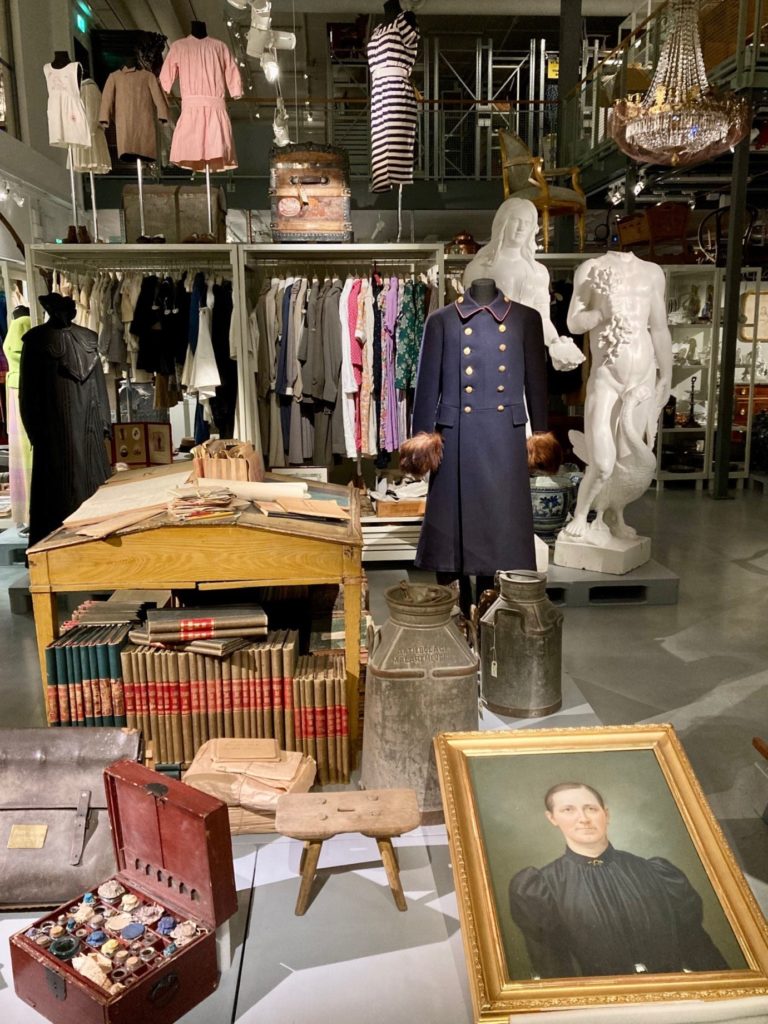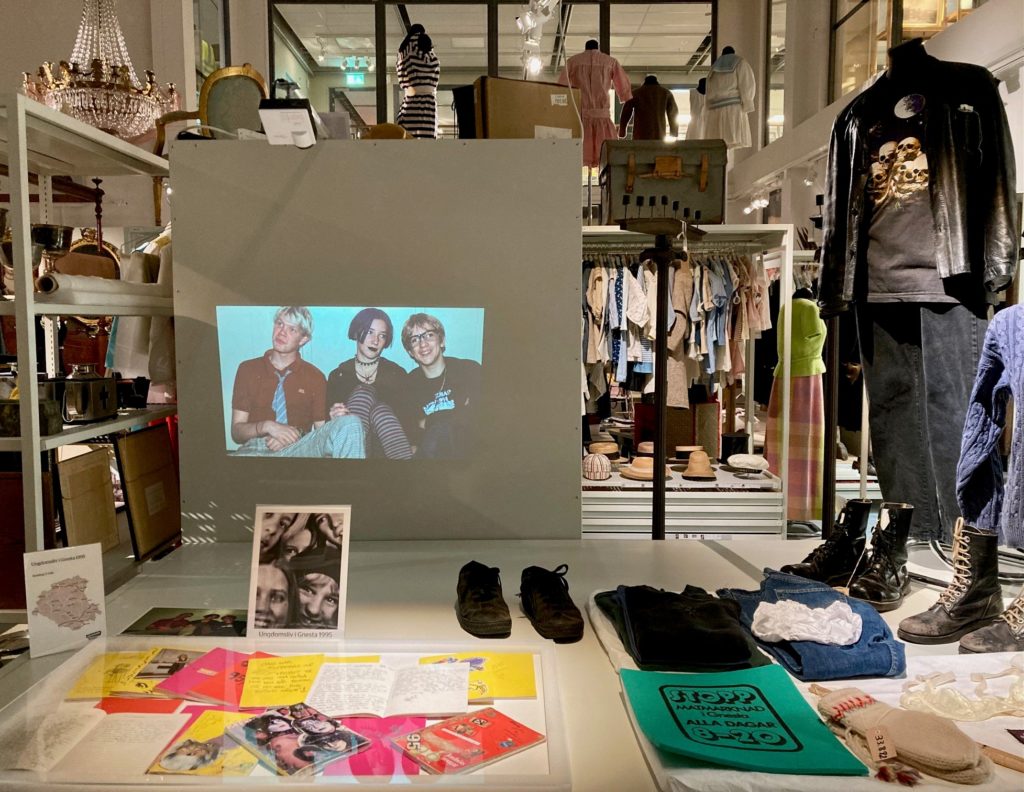
Peter Ostritsch
Head of Collections at Sörmlands museum in Nyköping, Sweden
Museums have no borders,
they have a network
February 21, 2023
Keywords: innovation, accessibility, new approaches, collections
Museum Collections in “Narrative Storages” – New Ways of Connecting with Cultural Heritage.
The play with secrecy can be an important factor in drawing the public’s attention to museums and exhibitions. However, regarding the accessibility to, and usage of museum collections, I would argue the opposite is true. We thus need to widen access to collections, instead of “hiding” them.
In this article I will argue that museum collections can be made more accessible, useable and, above all, more comprehendible for the public. I will use the “Narrative Storages” of Sörmlands museum in Nyköping, Sweden, as an example of a new possible format for museum collections.
The vast majority of museum collections is usually kept in storages that are neither in the vicinity of the museum itself, nor easily accessible to the public, for both practical and economic reasons.
However, if museums want to make better use of their collections and allow the public to engage with them, new ways to improve accessibility must be found. It is necessary for museums to have a holistic approach and to think of “collecting” and “making use of the collections” as one. What good are these collections if people cannot come in touch with their cultural heritage?
In November 2018, Sörmlands museum, a regional museum of Cultural history, opened a new museum building which houses exhibitions, offices and storages for their entire collection – which comprise around 80000 objects, 1 million photos and 400 shelf meters of archival material.
Before moving to a new building, the museum kept its three-dimensional objects in an underground storage facility and its archive material within the office building. The museum regularly opened the storage for smaller groups of visitors. What was shown were rows of objects sorted by type or material: cupboards in one section, paintings in another, clothes in a third, metals and irons in one room, wooden objects in another etc. – as it is typical for most museum storages.
Whenever there was a donation, objects were separated by material, category or size. By this process, the common narrative that held these objects together disappeared, or at least was no longer visible.
In an effort to restore a common narrative, the museum created several sub-collections. A very helpful device in this process of analysing, finding and re-organizing objects that originally belonged together but had physically been separated one, 10 or 50 years ago, was the museum’s digital database, which kept record of the links between objects.
A premise for this to work is a thorough process of collecting and documenting, when receiving objects, the museum not only asks questions about the objects themselves, but makes – if possible – biographical interviews with the previous owners or users, and asks for more objects (often photographs) that could add to the narrative. Sometimes even basic ethnographic fieldwork is included.

Hervor Wester collection, Sörmlands Museums Narrative Storages © Sörmlands museum
As a second step to revive interest in its collections, Sörmlands museum placed the storages at the heart of the museum and named them “Narrative Storages”. The museum had the rather rare opportunity to create a new building, and early in this process decided to make use of its biggest resource: its collections. They were made the center-piece of the new house with the construction of visible storages situated in the middle of the building. Visible storages within a museum’s main building might be nothing new, however, the way that Sörmlands museum structured and presented its contents, is rather unique.

Life on an estate, Sörmlands Museums Narrative Storages © Sörmlands museum
Taking the previously mentioned digital work with the collections as starting point, Sörmlands museum wanted to display its objects according to that structure. It was no longer the objects themselves (prioritizing material, object category or form) that were the main criteria of the ordering structure, but the narratives and biographies of the people connected to the objects. Instead of being confronted by hundreds of anonymous chairs or an army of plates, visitors can, for example, see both a hat, a photo album and a pen that have a common provenience next to each other. The objects are displayed in a more organic way and historical/social contexts become clearer. Suddenly, stories come alive, and visitors can “meet” human beings instead of “merely” things.

Youth in Gnesta 1995, Sörmlands Museums Narrative Storages © Sörmlands museum
The new storages are in the borderland between traditional storage and exhibition. Although the collections are curated to a certain extent, nothing is added or subtracted from a sub-collection’s or narrative’s original form.
The storages can be entered for free with a guide, each guide focusing on different narratives or topics. But even without a guide, visitors can see big parts of the collections through floor to ceiling windows and receive information about them via screens placed along the galleries. The digital content also focuses more on personal biographies than on the explanation of individual objects.
With this approach, focusing on narratives, the museum has been able to encourage more people to contribute their own stories. Especially individuals and groups who have been underrepresented in major social narratives.
Visitors become more aware of the purpose of museum storages and their collections. They can see beyond the objects and are more interested in, and curious about donating items to the museum if they know that it is not “merely” an object but their personal stories that will be preserved and shown there for generations to come.
